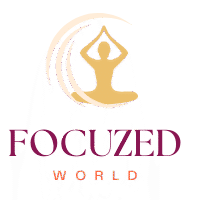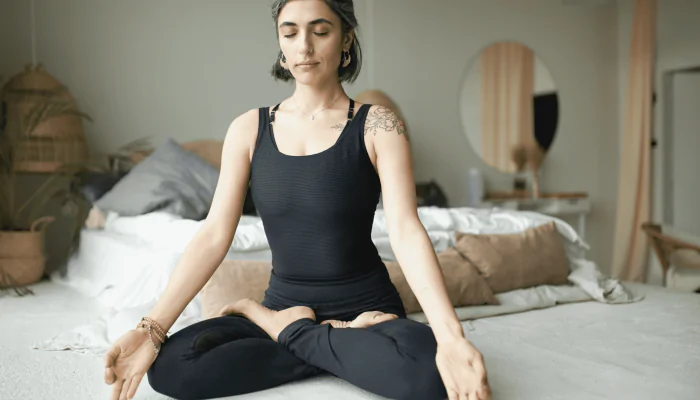What is the Sukhasana Pose?
The word Sukha in Sanskrit means “ease,” “comfort,” or “joy,” and that’s exactly what this pose is meant to offer—a calm, steady, and relaxed foundation for your meditation practice. If you are just starting yoga or meditation, the Sukhasana pose has got your back. Sukhasana, often called the “Easy Pose,” is one of the simplest and most accessible meditation postures. It’s the classic cross-legged sitting position you’ve probably seen in countless meditation or yoga photos.
Unlike the Lotus or Half Lotus, which can be intense on the hips and knees, Sukhasana is gentle, making it a perfect starting point for beginners who just want a comfortable seat without overthinking alignment. Don’t let the name “Easy” fool you, though—if you’re not used to sitting cross-legged for longer periods, this pose can still challenge your posture and endurance.
How to Perform the Sukhasana Pose?

Getting into Sukhasana is simple, but a little mindfulness in setup can make the difference between comfort and restlessness. Here’s how you can practice it:
- Find your base – Sit on a yoga mat or, better yet, on a folded blanket or cushion. Elevating your hips slightly above your knees helps relieve strain.
- Cross your legs comfortably – Place your shins loosely crossed in front of you. There’s no need to stack your feet tightly under your thighs—just let them rest naturally.
- Align your spine – Sit tall, lengthening your back. Imagine a string gently pulling the crown of your head upward.
- Relax your shoulders – Drop them away from your ears and let your arms rest on your knees or thighs.
- Breathe steadily – Close your eyes and take slow, mindful breaths, allowing your body to settle into stillness.
- You should feel supported but not rigid—like your body is grounded yet your mind is free to wander inward.
What are the Potential Mental and Physical Benefits of Sukhasana Pose?
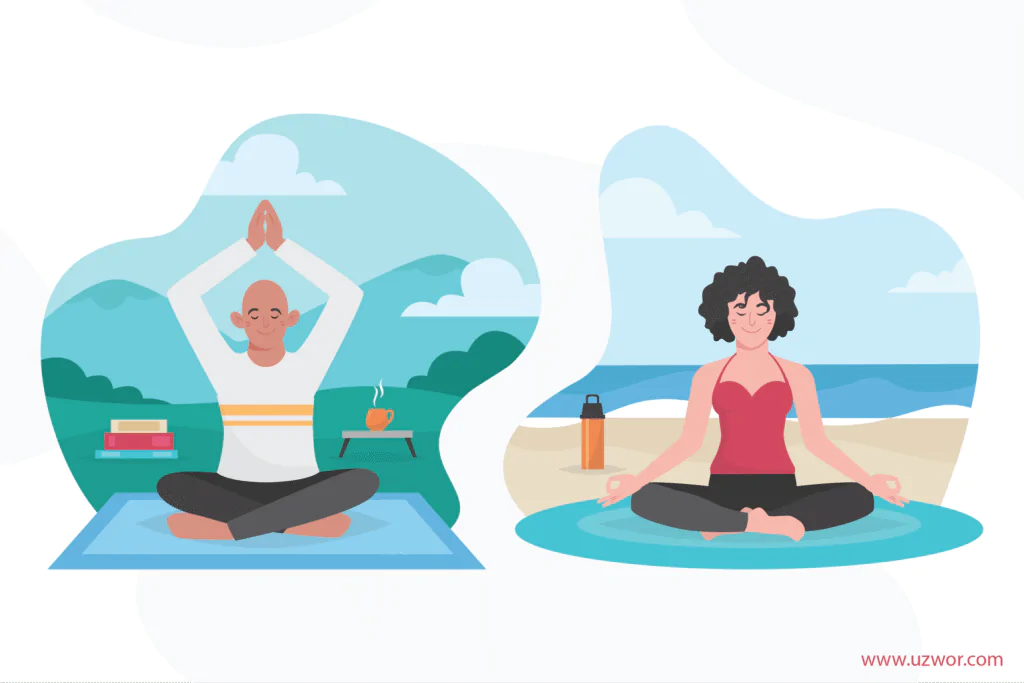
Mental Benefits:
- Encourages calmness: The simplicity of the pose naturally supports mindfulness, helping you ease into meditation without distractions. As you sit comfortably in the sukhasana pose, your thoughts flow like a river, and you break the thought’s pattern to turn your attention back to your breathing or any 1 specific object. Most people use a candle to return their focus. But it doesn’t matter.
- Reduces anxiety: By grounding your body, Sukhasana creates a sense of inner stability, which is especially helpful when your thoughts feel scattered. It has been proven that when you sit on the ground, most of your stress and anxiety washes away as you ground yourself.
- Boosts focus: A steady, aligned seat allows your mind to concentrate on your breath, mantra, or meditation practice more effectively. When you consistently force your mind to focus only on your breathing, then it becomes necessary to let go of thoughts that don’t need attention. Which means you have a handful of things to focus on.
Physical Benefits:
- Opens hips and groin: Gentle cross-legged sitting slowly increases hip flexibility without strain.
- Improves posture: When practised correctly, it strengthens the back and elongates the spine.
- Enhances circulation: Sitting upright encourages better blood flow to the lower body compared to slouching in a chair.
What are the Variations of the Sukhasana Pose?
Even though it’s called the “Easy Pose,” Sukhasana comes with a few variations to meet your comfort and flexibility needs. Here are some worth trying:
Supported Sukhasana
If sitting on the floor feels uncomfortable, place a folded blanket or firm cushion under your hips. This tilt reduces pressure on the knees and helps your spine stay upright. It’s perfect for beginners or anyone with tight hips.
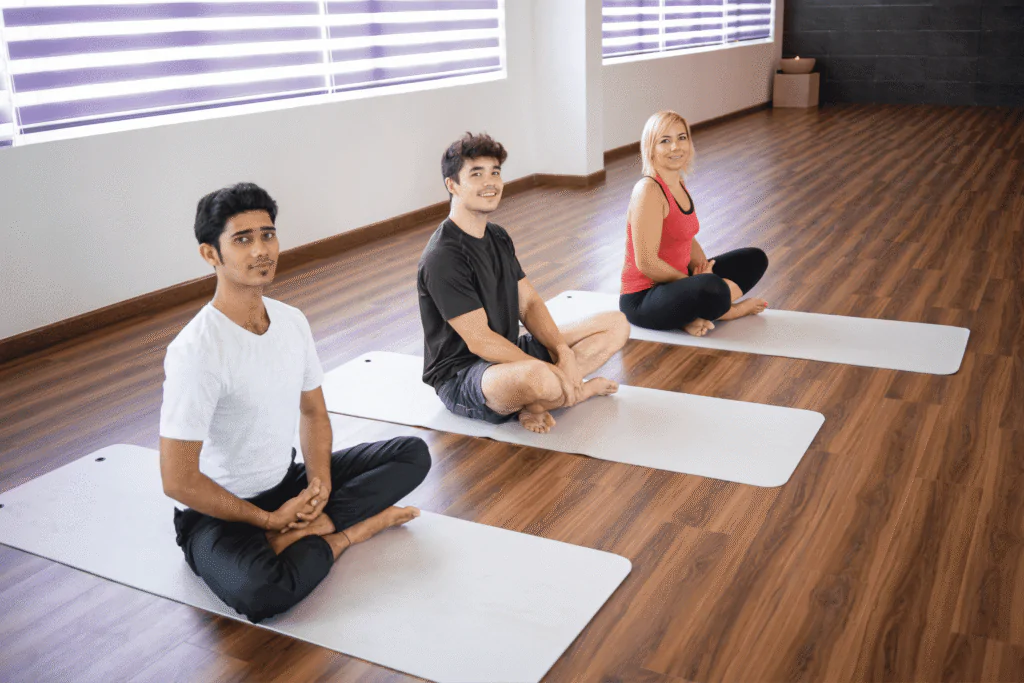
Sukhasana with Blocks
Slide yoga blocks or cushions under each knee for extra support. This relieves tension in the hips and prevents strain on the inner thighs, allowing you to sit longer without discomfort.
If you aren’t comfortable even using supported items, it may be case that this meditation pose isn’t for you. You can find the 15 different beginner friend meditation pose. try these poses, and practice whatever best work for you.
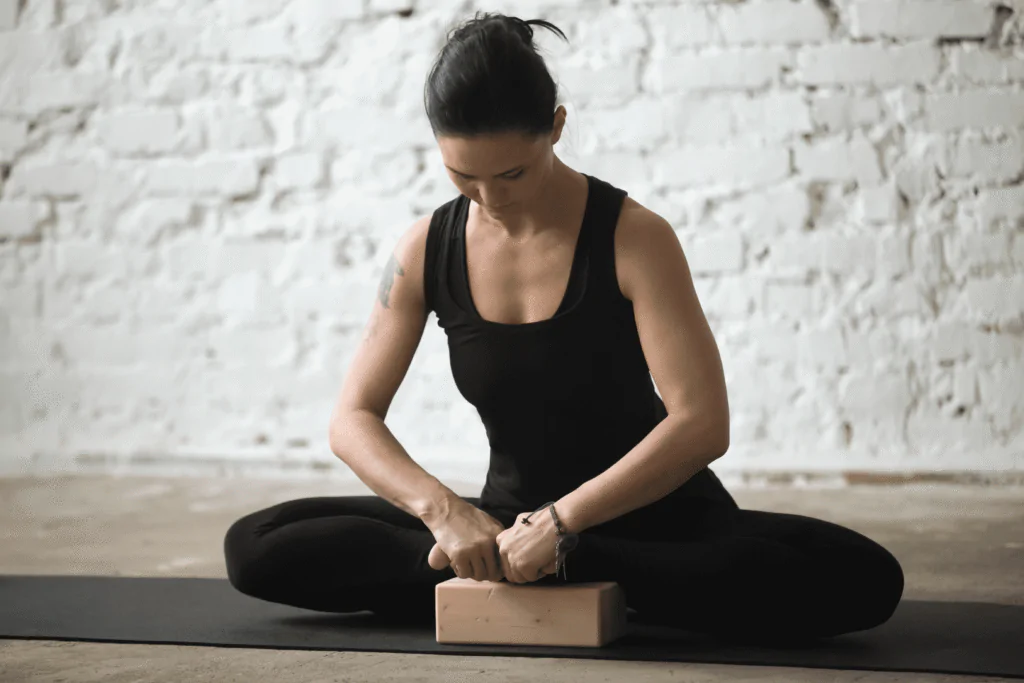
Bound Hands Sukhasana
While seated in Sukhasana, bring your hands behind your back and clasp them together. This variation opens the chest and shoulders, making it great for countering slouching from long hours of desk work.

Sukhasana Twist
From the basic pose, place your right hand on your left knee and your left hand behind you, gently twisting your spine. Hold for a few breaths, then switch sides. This adds a refreshing spinal release while staying grounded.

What are the Preparative Poses of the Sukhasana Pose?
Since Sukhasana involves hip and lower back flexibility, warming up before sitting for longer sessions can make the experience more comfortable. Helpful preparatory poses include:
- Bound Angle Pose (Baddha Konasana): Opens the hips and inner thighs.
- Seated Forward Bend (Paschimottanasana): Stretches the hamstrings and lengthens the spine.
- Cat-Cow Stretch (Marjaryasana-Bitilasana): Warms up the spine for upright sitting.
- Child’s Pose (Balasana): Releases tension in the lower back and hips.
- Spending just a few minutes in these stretches can prepare your body for a more relaxed and sustainable Sukhasana.
What is the Sukhasana Pose Precaution?
Even though it’s called the Easy Pose, Sukhasana isn’t always effortless. Here are some precautions to keep in mind:
- Knee or hip discomfort: If you feel pain in the knees or hips, don’t force the position. Use props like cushions or blocks for support.
- Slouching back: Avoid rounding your spine—it can cause back pain. Keep your hips elevated if you struggle to sit tall.
- Circulation issues: If your legs start tingling or going numb, take a break, stretch them out, and then reset.
- Gradual practice: If you’re not used to sitting cross-legged, start with short sessions (5–10 minutes) and build up over time.
Remember, meditation is about finding ease, not forcing your body into a shape that feels unnatural.
